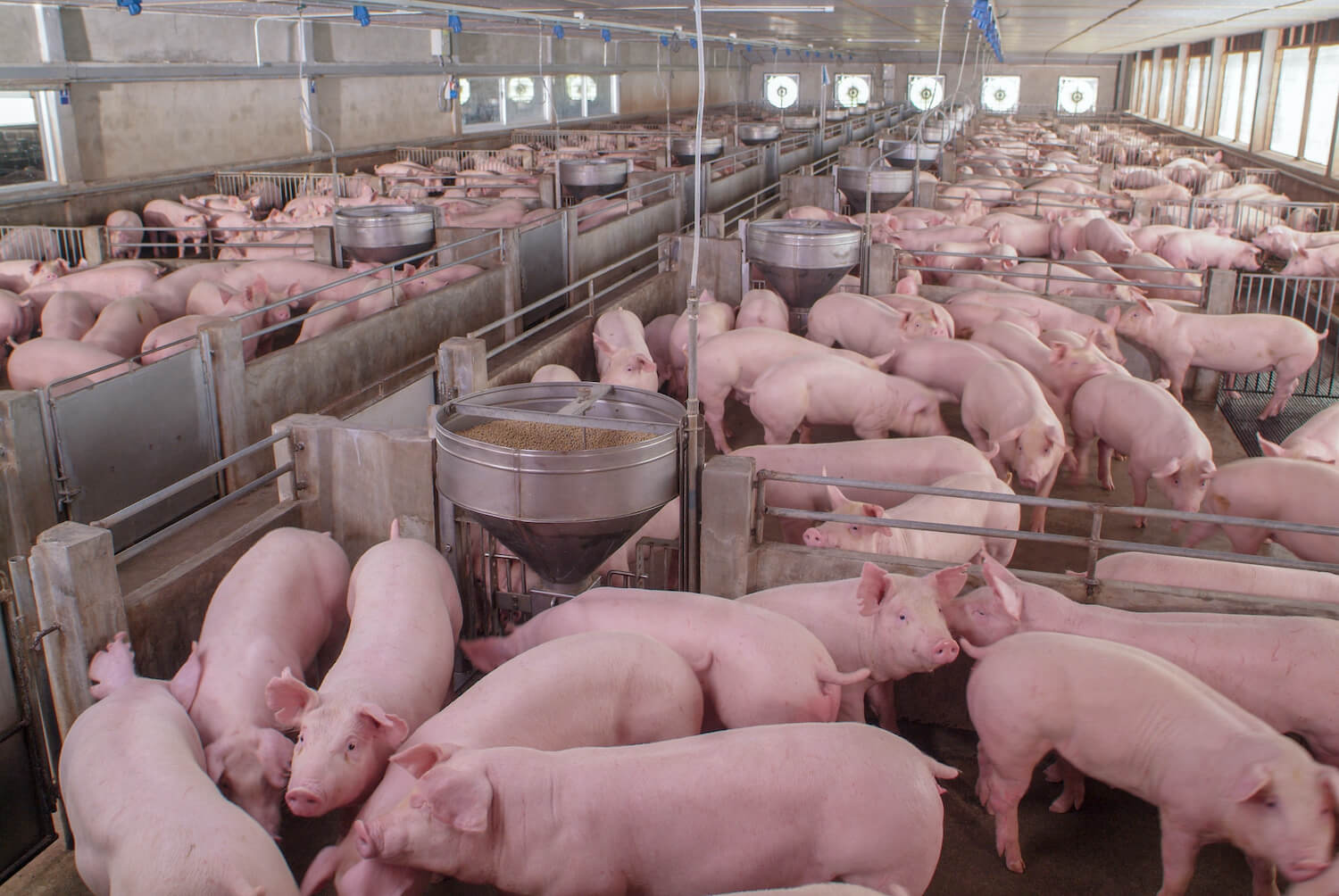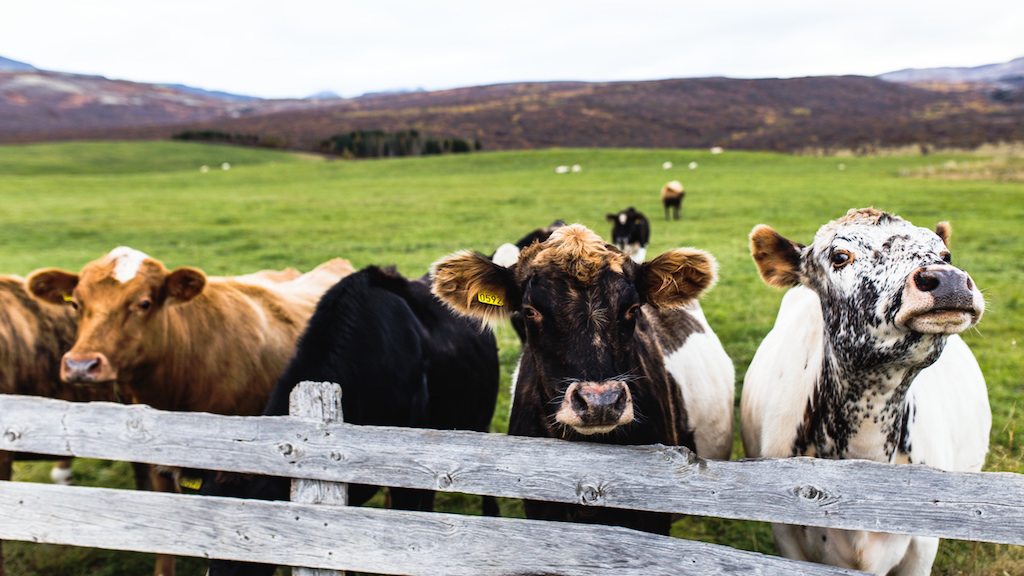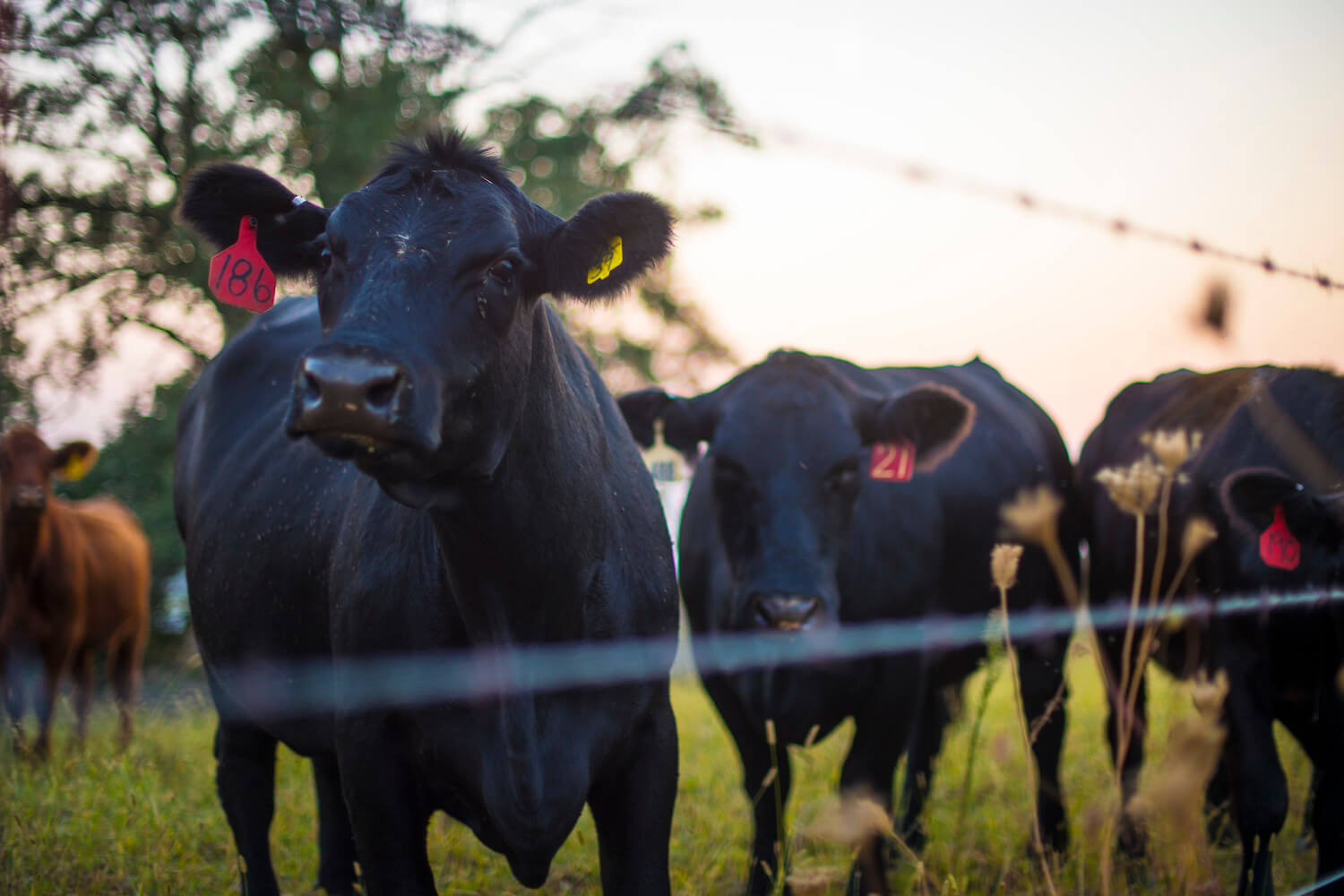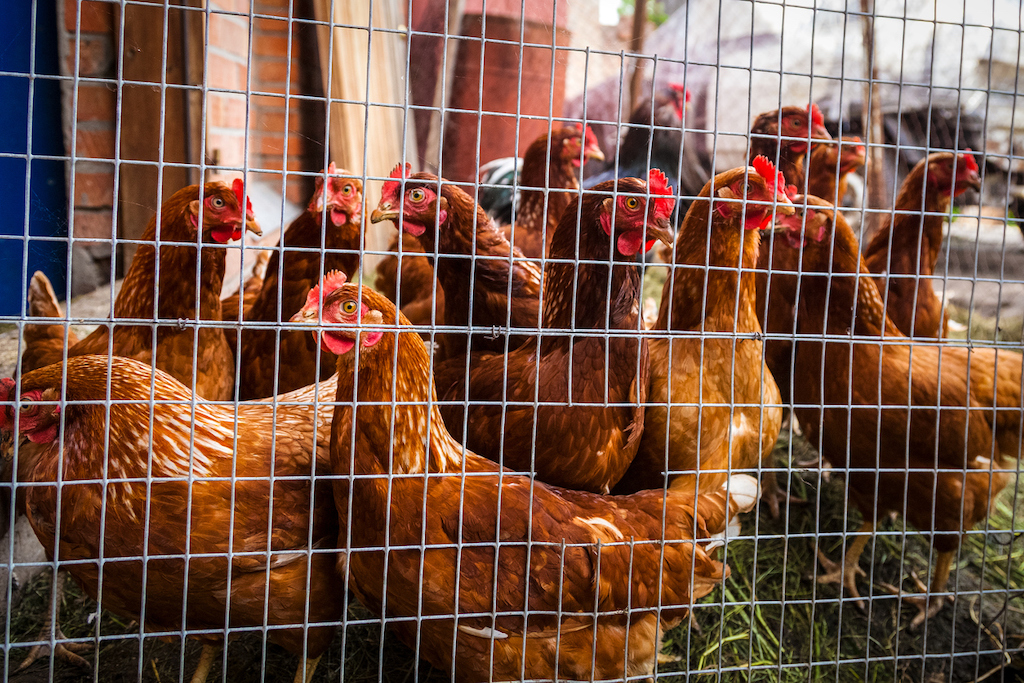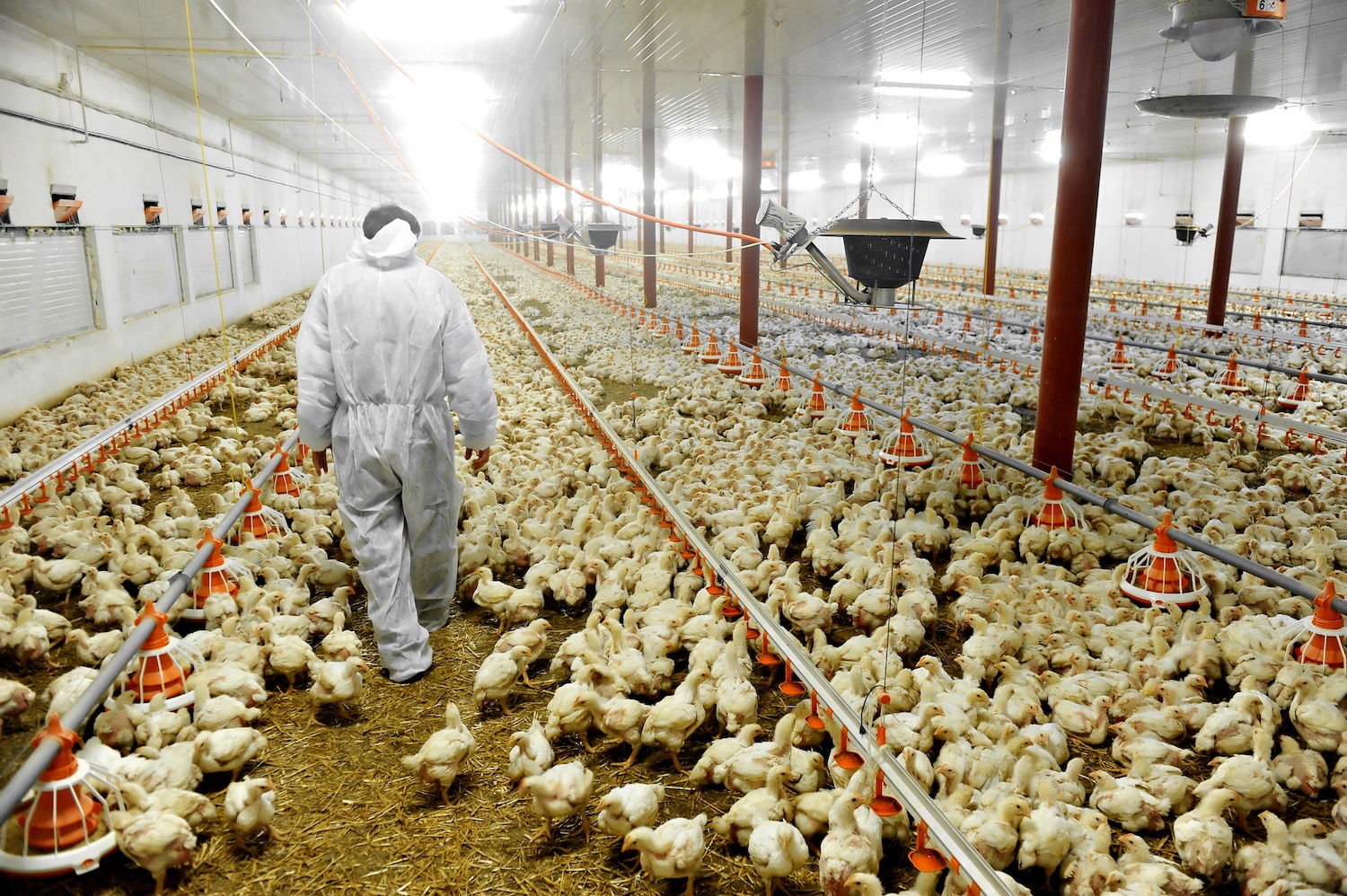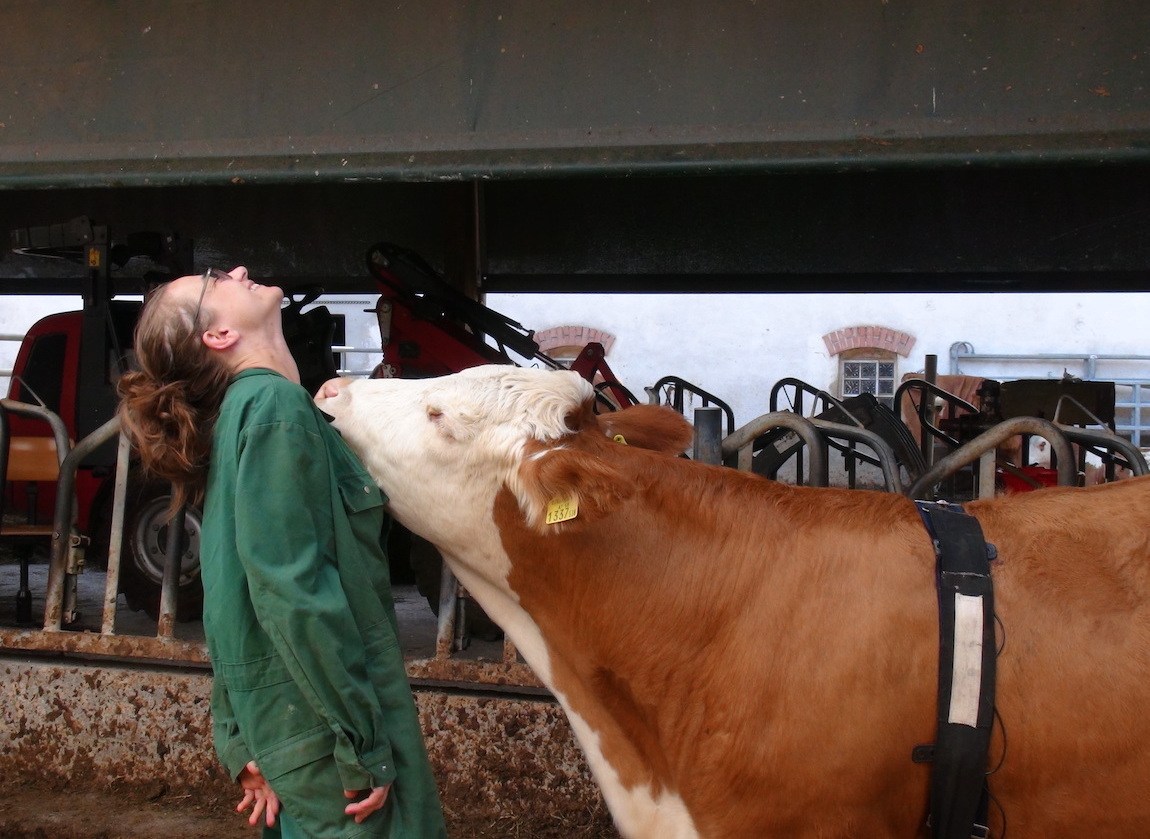
© Institute of Animal Welfare Science, Vetmeduni Vienna
Animal welfare scientists find that soothing whispers and gentle massage can reduce a heifer’s heart rate, helping it relax.
The next time you need to help a cow relax, may we suggest massaging it gently, while whispering sweet nothings into its ears? According to a new study on human-cow interactions, animals that experience tender stroking in conjunction with live communication—as opposed to recorded voices—are more likely to enter a state of blissful relaxation afterward. (Who among us?) This emerging research could raise new questions about how human-animal interactions affect livestock productivity.
The findings, published last week in Frontiers in Psychology, stem from an experiment conducted by a team of farm animal welfare researchers. Previously, these scientists had looked into how cows respond to human touch. This time, they were also interested in figuring out whether human voices might affect the animals—and if so, whether cows had a preference between live and recorded talking.
“We are using [farm animals] in many ways—for their milk, their meat, their skin—and in return we should try to learn as much as we can about them and find out how we can improve their lives,” said the study’s lead author, Annika Lange, in an email. Lange is a Ph.D candidate at the Institute of Animal Welfare Science at the University of Veterinary Medicine in Vienna. In this particular study, Lange said, “we wanted to find out if [recorded voices] would have an effect on the cows’ perception of the interactions with humans.”
The phrases were: ‘Hello my dear. That’s a good cow. Yes, you are a fine girl. Such a nice heifer. Yes, this is nice. Yes, you are doing well, you can relax.’
To find out, Lange’s team conducted a series of trials involving both physical touch and vocal communication with 28 heifers, i.e., female cattle that haven’t yet produced offspring. Each cow underwent a total of six massages, which were accompanied by either live vocal communication or pre-recorded messages, in alternating order.
“As the study was conducted in Austria, we addressed the heifers in German,” Lange explained. “Translated, the phrases were: ‘Hello my dear. That’s a good cow. Yes, you are a fine girl. Such a nice heifer. Yes, this is nice. Yes, you are doing well, you can relax.’”
Researchers then used heart rate monitors and video equipment to observe both internal and external reactions over the course of each trial.
The cows appeared to indicate that they took pleasure from all interactions—and who can blame them? Researchers noted an increase in neck stretching, a behavior associated with enjoyment, and a decrease in ear flicking, conversely associated with annoyance.
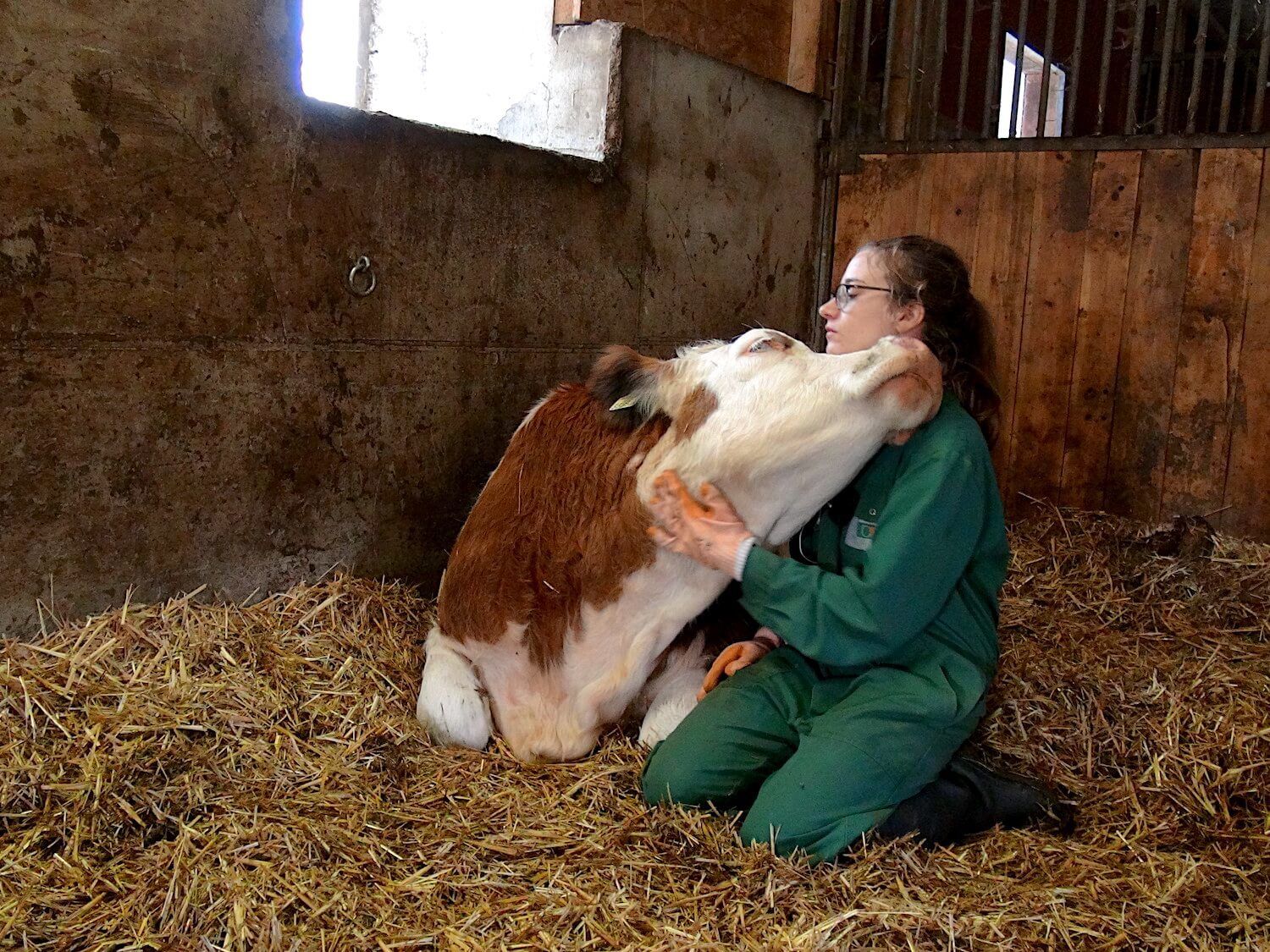
The new study in Austria looks at how heifers respond to human voices and touch.
© Institute of Animal Welfare Science, Vetmeduni Vienna
More remarkable, however, was what cardiac data revealed: The cows appeared to benefit significantly from live voices over recorded ones, with their heart rates noticeably decreasing after a massage featuring the former compared to the latter.
The study’s authors speculated that sound resonance and quality might explain the variance, as well as subliminal changes in how animal handlers interact with cows while speaking. It also might not be so surprising to anyone who’s been socially distancing during the coronavirus pandemic. There’s just something a bit more tangible about the way voices sound in-person compared to Zoom. We all know it, and clearly, the cows do, too.
The findings raise further questions about how animals respond—not just in terms of behavior, but internally, as well—to human interactions.
“It could also be beneficial to look at the more stressful situations in a cow’s life: the effects of the behavior of humans during milking, veterinary procedures, during loading to transport, or even at the abattoir,” she said.
“We are using farm animals in many ways—for their milk, their meat, their skin—and in return we should try to learn as much as we can about them and find out how we can improve their lives.”
Knowing those effects may go on to inform the way livestock producers handle animals, as well as future animal welfare regulations.
Researchers have long tried to parse the thorny relationship between animal well-being and agricultural output. And while there are a handful of studies that draw links between the two—such as this study on dairy cow comfort and profitability and this one on pig welfare and productivity—few findings are definitive about how to balance animal welfare with production goals. It’s an area that has taken on greater significance in recent years, with industrial farm practices under increasing scrutiny for corollary health concerns—for both animals and eaters.
Studies like this illustrate just how much we don’t yet fully understand of human-animal interactions. And while a clearer determination of what is “good” for the animals in our food system will take a lot more experimentation—at least we now know that cow cuddle therapy doesn’t hurt.

